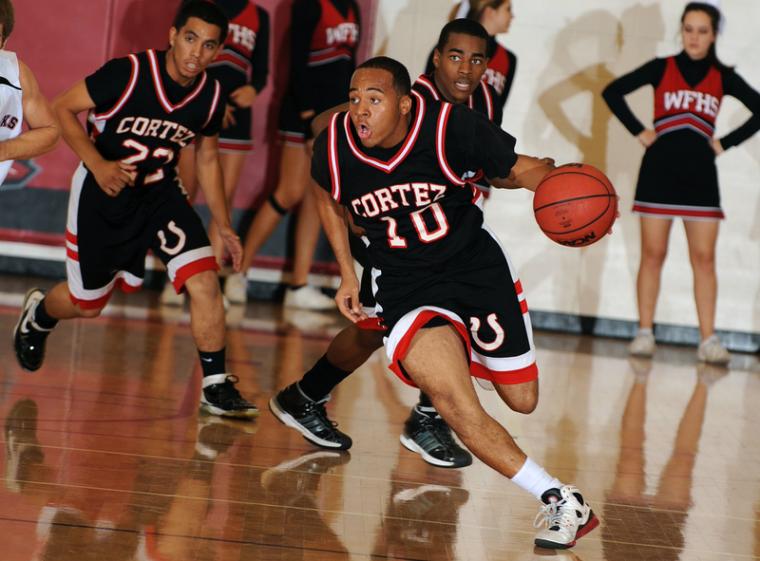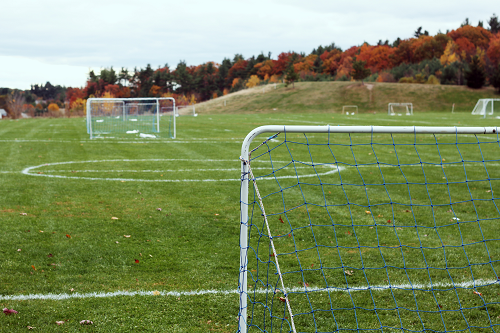

Reality check: The majority of youth sports participants, high school athletes and college athletes will not wind up playing in the NBA, NFL, NHL or any other professional sports league. Nor are high schoolers likely to access a full ride to colleges.
The most recent ammunition in the fight for kids (and parents) to remain realistic comes from The Global Odds Index — a website “dedicated to the odds of life” — which has issued a reminder of just how rare it is for an athlete to reach the most elite levels of organized sports.
“There are obstacles at every turn, meaning only a tiny fraction of amateur sportsmen and women ever turn professional,” the site notes in presenting the probabilities of becoming a professional in soccer, tennis and golf. Physical attributes, country of birth and plain old luck all play a role.
The report breaks down each sport by country and gender. Male soccer players in the United States make up just 1.42% of the world’s top-tier players, according to the report. By comparison, Brazilian male soccer players lead the way, comprising 5.14% of all top-tier players. The odds of becoming a top global player for U.S. males is 1 in 55,393; if you live in Iceland, however, they’re only 1 in 83.
U.S. female soccer players, on the other hand, comprise 8.70% of the world’s best players — good for a top-three ranking behind China (11.72%) and Japan (11.19%). But the odds of a U.S. women’s soccer player becoming among the global elite are even higher than they are for male players: 1 in 93,319.
It’s a different story with tennis, where men and women from the United States comprise the highest percentage of top players in the world (9.59% and 11.15%, respectively). Yet the odds of reaching that level remain incredibly high — 1 in 82,379 for men and 1 in 103,189 for women.
U.S. golfers dominate even more than U.S. tennis players, according to the Global Odds Index. More than 23% of the world’s top-tier male golfers and more than 12.25% of the world’s top-tier female golfers are from the United States. Golf also offers men the lowest odds of high worldwide success among the three sports analyzed: 1 in 51,346; for women, on the other hand, the odds are the highest among the three sports analyzed: 1 in 117,286.
The index’s methodology was intricate: “For team sports, player data was taken from every team playing in the top domestic league of the world’s highest ranked nations. For individual sports, the players that feature in each sport’s international association ranking were included. The athletes were assigned to countries based on their nationality. In cases of multiple nationalities, the athletes were assigned to their country of birth. To calculate the odds of being a top-tier athlete, we compared the number of top-tier athletes from each country with that country’s number of births over a 12-year period — representing a typical length of a sporting career at the top level. The odds represent the chances of someone born during that period making it to the elite level of each sport.”
In April 2020, the NCAA updated its data indicating the “estimated probability of competing in professional athletics.” The percentage of baseball and men’s ice hockey players who moved from the NCAA to a “major” pro league were 9.9% and 7.4%, respectively. But the percentages were much lower for other major sports, including football (1.6%), men’s basketball (1.2%) and women’s basketball (0.8%).
Those statistics should provide a brutal wake-up call to the parents who participated in a 2019 survey conducted by The Harris Poll on behalf of TD Ameritrade. More than 40 percent of dads reported that they expect their child to become a professional athlete.
“It’s extremely difficult to make the pros; we all know that,” Tom Farrey, executive director of The Aspen Institute’s Sports & Society Program, told Mojo.Sport — a website for sports parents — earlier this year. “A lot of parents today see those odds and say, ‘Well, I’d better get started early with my kid.’”
All of this is not to undermine the benefits of youth sports. “Youth athletes are driven to succeed,” Elizabeth Pieroth, director of the concussion program at Rush University Medical Center and Midwest Orthopedics at Rush, wrote in a March 2021 opinion column for theChicago Tribune headlined “Your child wants to be a pro athlete? Be realistic.”“They make great and sometimes long-lasting friendships with their teammates. They learn how to win, and how to fail and get back up. They learn about leadership and time management. I love the body confidence that I see in so many female athletes. Research shows that youth athletes have higher rates of graduation and lower rates of substance abuse, teen pregnancy, and depression and anxiety than their non-athlete peers.”

